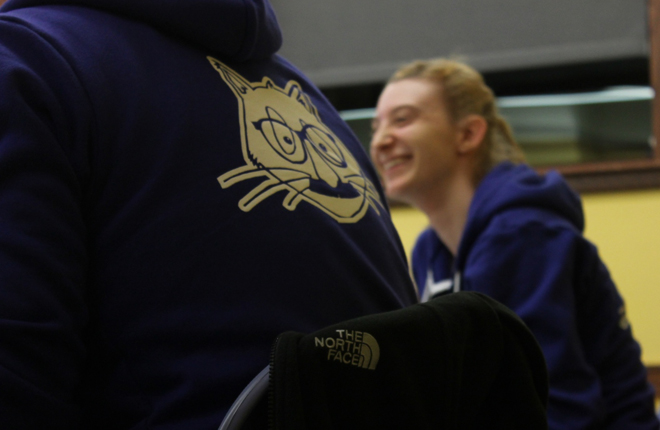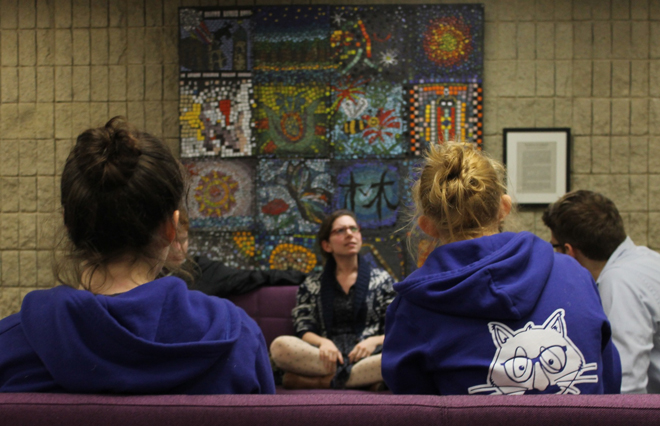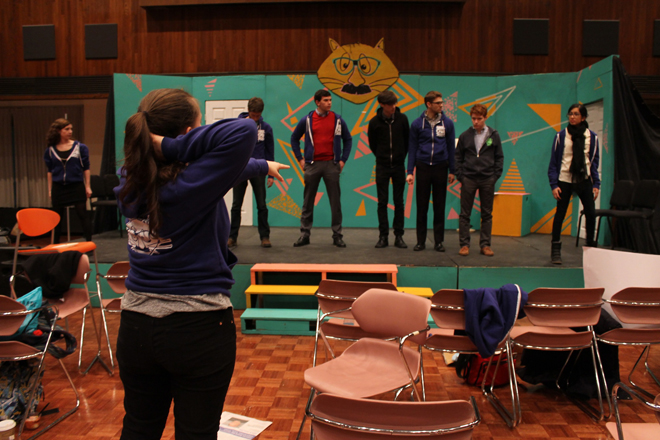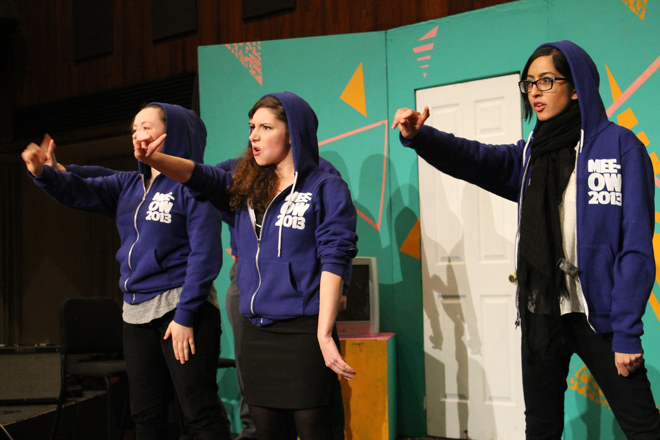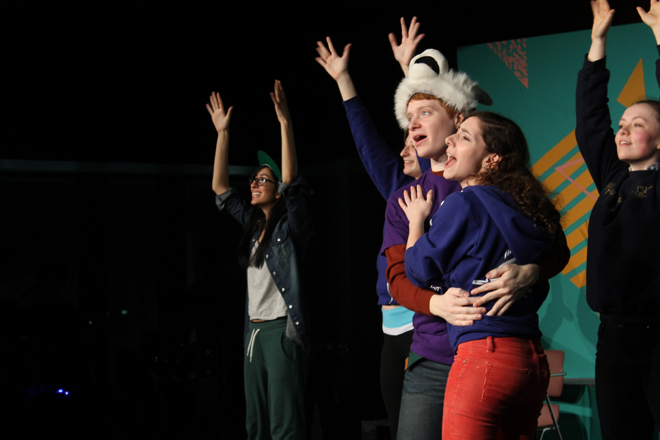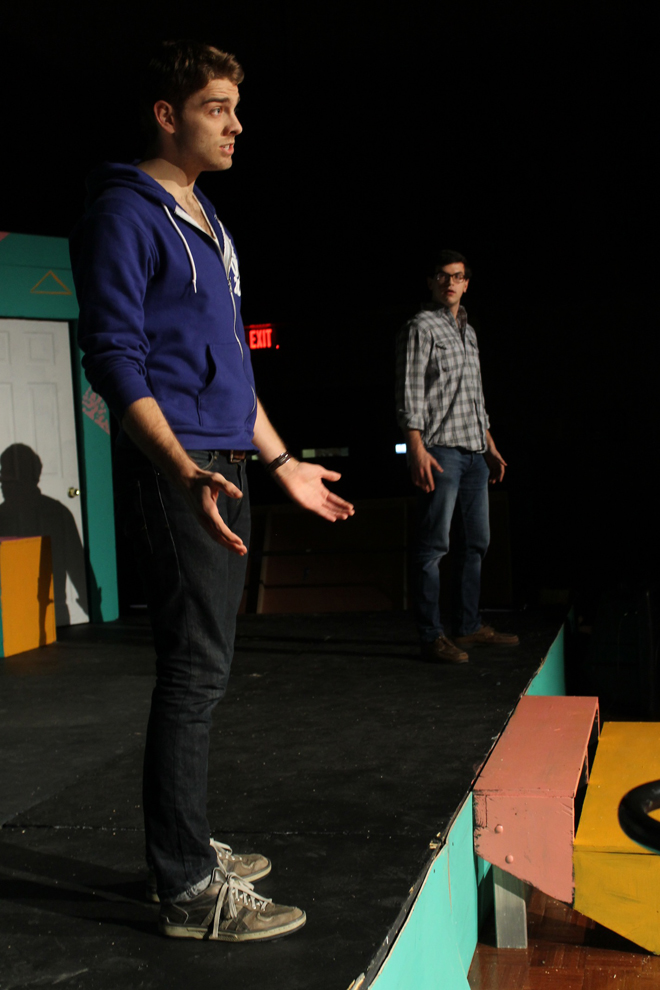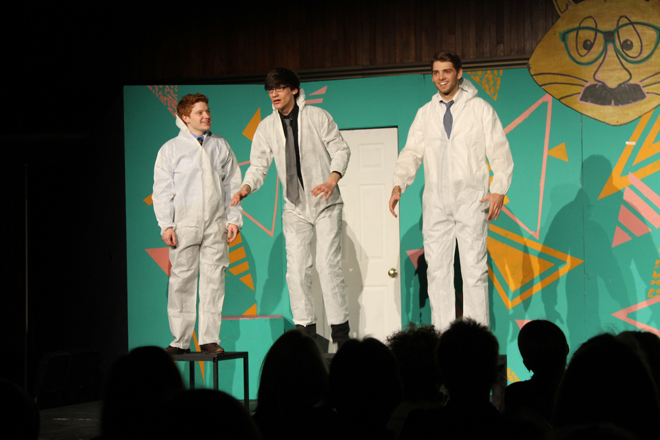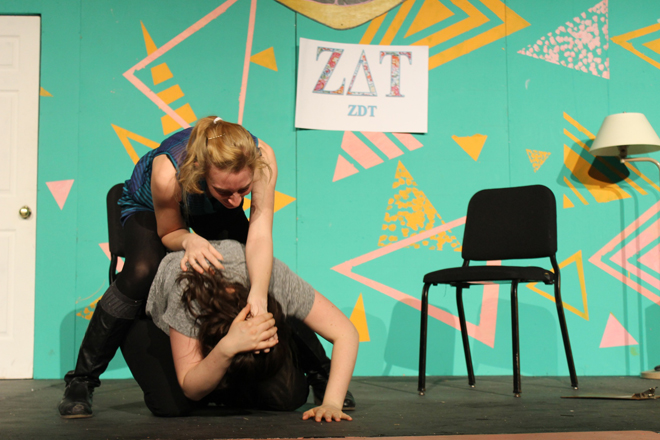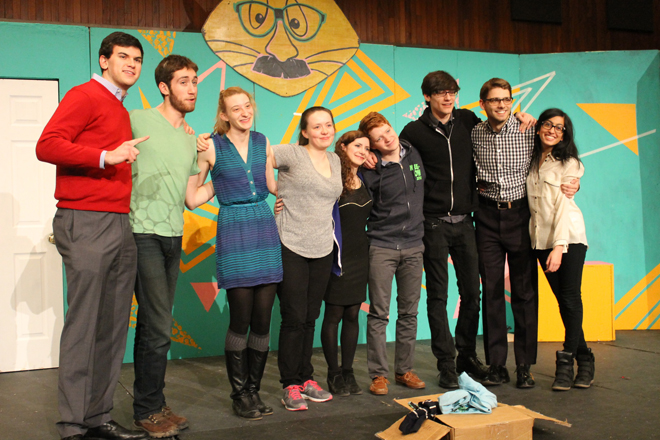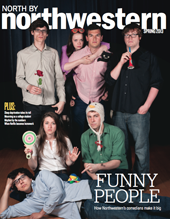On Saturday at 8 p.m. Mee-Ow, one of Northwestern's most famous improv and sketch comedy groups, took to the stage for a surprise performance in Harris Hall. This spring show was an experiment on the part of the group that ordinarily performs two shows during the winter months (one at Shanley Pavilion and the other in the Norris' Louis Room). It consisted entirely of improvisational comedy, with the members of Mee-Ow playing various games, taking audience suggestions and offering members of the Northwestern community a chance to experience their performance for the last time this year.
During winter quarter, I had the opportunity to follow the cast and crew around during rehearsals and tech week for their Winter Louis Room show, Mee-Ow That's What I Call Comedy! Vol. 40. It was a whirlwind of a journey, but with a peek behind the curtain, I gained even more respect for this quintessential college comedy group.
What we see of Mee-Ow on stage does not even scratch the surface of all the work that goes into the group. Auditions are held each year to form a new cast, which this year consists of seniors Sam Fishell, Michael Janak, Matthew Hays, Emily Olcott and Brendan Scannell, juniors Pat Buetow, Gaby FeBland and Amina Munir and sophomore Emma Cadd. Fishell, who is one of the co-directors of Mee-Ow this year along with Olcott, described his first audition for Mee-Ow as "horrifying." He ended up getting into Titanic Players that year (he credits Scannell, who he did a scene with in his audition, for "dragging" him into Titanic) and by his sophomore year he became a member of Mee-Ow. First-year member Cadd had a similar experience, auditioning for Mee-Ow her freshman year and not getting a callback, but making it onto the cast as a sophomore.
It may be a hard act to become a part of, but to their credit, Mee-Ow brings together a small number of members with a high degree of talent to create two of the best comedy shows on campus each winter, both of which come together in a matter of weeks. When school reconvened in January this year, they spent the first two weeks of winter quarter writing and putting together their first show, The Great Catsby, followed by a tech week and then a premiere at Shanley Pavilion. The second show, in the Louis Room, was put together in the three weeks following the Shanley show, according to Olcott. With four-hour rehearsals four times a week in the winter and two-hour rehearsals twice a week in the fall, it becomes a full-time commitment for the ten members over the course of the year.
However, once the shows become reality, the cast must pull out all the stops and rely on one another for moral support. Before each rehearsal, the Mee-Ow cast sits together to discuss the events of the day, "putting in" the problems they faced and "taking out" positive stories. "We all know each other so well that we can begin to predict what this person might do in this scene or what jokes they might make and how to set it up so that they might make that joke," Cadd said. This came to her benefit in The Great Catsby when during one of the shows she was rescued when she made a flub, an experience that cemented her trust in the rest of Mee-Ow.
Because each Mee-Ow show varies slightly in the order of sketches and improv games, Cadd was not sure of which scene came next and assume it was one in which she had to go out on her own and sing to the audience. "So I grabbed the mic and went into my spot and the lights came up and I started singing," Cadd said. "And then out of the corner of my eye, I see someone behind me." A moment later, she turned to realize that all of Mee-Ow was standing behind her, petrified. They had meant to start performing a game rather than her singing sketch, but quickly brushed off the mistake with a quick joke, telling Cadd after the show that if she had continued they would have incorporated their presence into the scene. "Just knowing that I could fail as hard as I did and just make a total idiot of myself and they would be there to make it look like I hadn't made a mistake at all – that was just incredibly encouraging and fortifying," Cadd said.
The family that is Mee-Ow, is a product not only of a well-combined cast, but also focused leadership. Olcott and Fishell, speaking in separate interviews, are constantly complimentary of each other. Olcott called Fishell "one of the future comedic voices of our generation," with Fishell calling her a "goddess" of musical theater. They both cited their work as being "complementary."
Indeed, they must be complementary and organized. Each Mee-Ow show is more than just an assembly of moving parts. With both sketches and improv games, the directors of the show must put together a program that gives each member of the group an equal number of appearances. They do this by using a point system in which different roles (depending on whether they are leads, small parts, etc.) are allotted different point quantities and then totals are calculated to determine if each member has been represented adequately. The end result is a complicated schedule that changes during each performance, but somehow comes together seamlessly.
With two shows performed in such a short amount of time and all the material being original and written by and for Mee-Ow, it becomes a game of picking the best work to showcase in each performance. From 80 or 90 sketches, they choose just over 20 to showcase in crew view (an event in which the cast performs skits for the crew of the show, who then provide feedback), which are then cut down to – in the case of the Mee-Ow That's What I Call Comedy Vol. 40 – 10 sketches and eight blackouts (blackouts being short snippet scenes rather than fully developed comedy sketches).
By the end, however, they come up with comedy that has at times proved incredibly memorable. One example is Scannell's Douglas the Gay Scotsman character, who appeared in both The Great Catsby and Mee-Ow That's What I Call Comedy Vol. 40. The charcter was developed out of a Mee-Ow improv game called Yearbook, in which several cast members must come up with stories for characters they create that belong to a fictional club at a make-believe high school. "We were playing Yearbook and the club was the Billy Elliot Club," Fishell said. Billy Elliot, a fictional character from the movie of the same name, is a Northern English boy who takes up ballet dancing at the same time that is father takes part in the UK Coal Miners' Strike in the 1980s. "Brendan was trying to do a Northern English straight person who was very aggressively defending his sexuality," Fishell said. "But what he ended up doing was a Scottish person who was very aggressively defending his homosexuality. His opening line was supposed to be 'I'm from wherever and I'm not a poof,' and instead he said, 'I'm from wherever and I'm a poof.'" Eventually the mistake turned into a full-fledged sketch – co-written by Fishell and Scannell – which is one of the signatures of this year's Mee-Ow performances.
But Mee-Ow's legacy is more than just a few sketches that are performed each year. In its long history, it has grown to possess a legacy not only through its comedy but also its weird roots and its many famous members.
"Mee-Ow didn't start off as just an improv group," Olcott said. "In 1974 it was kind of a direct parody of Waa-Mu. It was a three hour long ridiculous musical spectacular that had a laser show and there were some comedy elements and it was crazy." Participants in the craziness included Seth Meyers, Kristen Schaal, Dermot Mulroney and Julia Louis-Dreyfus, among others.
Yet what Mee-Ow members really consider the success of Mee-Ow is the value of friendship and of good times. According to Olcott, "If being Mee-Ow is about anything, it's about having a good ol' time with your friends." She continued, "That's kind of a microcosm for what I hope people take away from going to Mee-Ow shows. Just celebration, fun, laughing, good times with your friends, enjoyment, entertainment. That's what I want people to take away, like 'Oh yeah, Mee-Ow, that's like a highlight of my weekend."
For a small audience that came together in an intimate theater in Harris Hall, perhaps it was the highlight of the weekend. They had the chance to enjoy one of Northwestern's best institutions, a collection of performers that has contained and will likely continue to produce some of Northwestern's greatest comedic minds, Mee-Ow.

